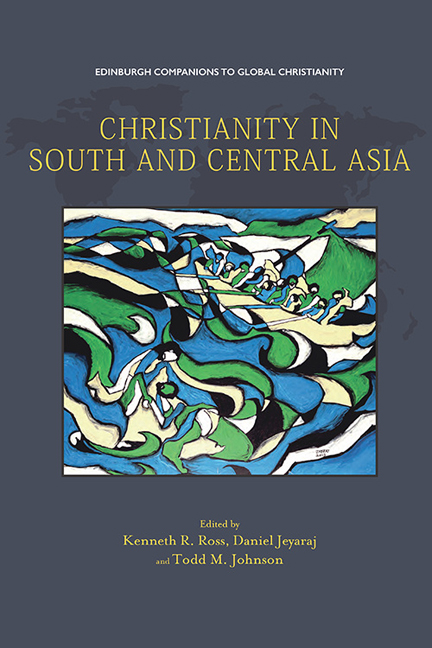Kyrgyzstan
Published online by Cambridge University Press: 30 April 2020
Summary
The history of Christianity in Kyrgyzstan is both ancient and modern, traversing the witness of the Church of the East (sometimes referred to as the Nestorian Church), the Russian Orthodox Church, and Baptist, Pentecostal and Mennonite Churches (largely made up of ethnic Slavic groups, Germans and Koreans) as well as Roman Catholics and Seventh-day Adventists. The most recent development has been the re-emergence of expressions of Central Asian Christianity through the growing numbers of those identifying as Christians but who are from Kyrgyz, Kazakh, Uzbek and other indigenous communities, groups who are commonly understood to be Muslim. Unless otherwise specified, the terms ‘Kyrgyz’, ‘Kazakh’, and ‘Uzbek’ refer to the ethnic groups who are identified by these terms, not the nationality or citizenship ascription, which may include members of all ethnic groups. In the latter case these would be identified as Kyrgyzstan or Kazakhstan or Uzbekistan nationals or citizens.
Post-Soviet Kyrgyzstan
Kyrgyzstan (formerly known as Turkestan) is one of the smaller Central Asian nations, both in terms of both geographical size and population (just under 6 million). It is bordered by Kazakhstan, Uzbekistan, Tajikistan and, to the east, China. Formerly one of the republics of the Soviet Union, Kyrgyzstan was part of a group of nations referred to as Soviet Central Asia. It is a mountainous country where the majority ethnic community, the Kyrgyz, have a long history as nomadic pastoralists, famous for their horsemanship and livestock. The Kyrgyz form the majority or titular ethnic group in the present–day nation of Kyrgyzstan. The 2009 census figures show that Kyrgyz number about 71% of the population, Uzbeks 14% and Russians 8%. There has been a nearly 50% decrease in the Slavic and German populations since Kyrgyzstan became independent from the Soviet Union in 1991. While there are economic and cultural reasons why many have moved back to their respective homelands in Russia and Germany, this also reflected fears that under a post-Soviet national Kyrgyz government some groups, especially the Russian community, would encounter ethnic discrimination.
The Kyrgyz are generally considered to be a Muslim ethnic group. Since 1991 significant numbers of the ‘ethnic’ Kyrgyz have accepted the Christian faith.
- Type
- Chapter
- Information
- Christianity in South and Central Asia , pp. 70 - 82Publisher: Edinburgh University PressPrint publication year: 2019



